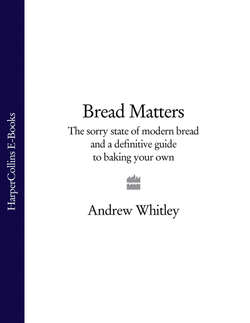Читать книгу Bread Matters: The sorry state of modern bread and a definitive guide to baking your own - Andrew Whitley - Страница 69
Flavour
ОглавлениеIt is striking that in professional manuals and domestic baking books alike, there is rarely, if ever, a mention of the flavour of flour. True, many factors contribute to the flavour of a baked loaf, not least the length and method of fermentation. But flour is by far the largest component of bread, and since much bread is made with white flour, which is intrinsically pretty tasteless, one might have thought that some attention would be paid to the differences in flavour between various wheat varieties. It seems, however, that the average British consumer rather favours blandness. Some years ago a large independent bakery firm did some trials with a sourdough system for making standard white sliced loaves, but did not adopt the new method when taste panels reported that the bread had ‘too much flavour’.
For those home bakers who do want to make the best-tasting bread, I recommend British wheat every time. It goes without saying that I mean good, organically grown British wheat. Any wheat grown in a cold, sunless summer, harvested too late and needing to be dried mechanically is unlikely to taste wonderful. But there is something about the conditions in the better kind of British summer that, combined with the right soil and a suitable wheat variety, can produce flour that tastes superb. And I do mean British, not just English. Some of the highest-protein wheat in Britain has been grown on the Black Isle (north of Inverness), whose microclimate and extended summer day-length must be partly responsible1. I hope that the work currently being done in various European countries to develop wheat varieties more suited to organic systems will not forget to include flavour as a key criterion.
